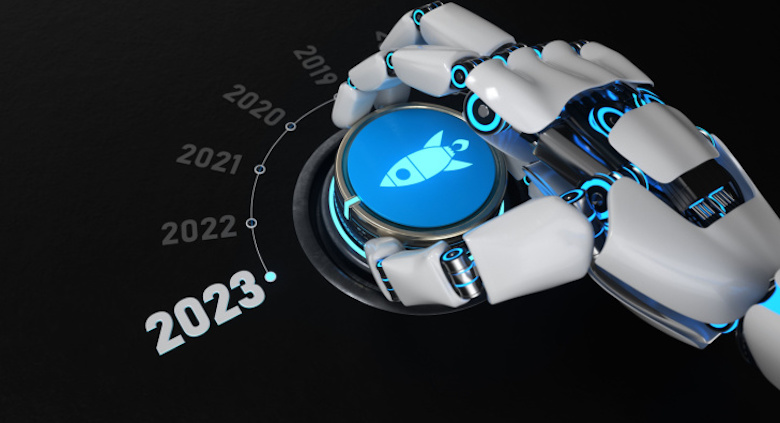A BEGINNER'S GUIDE TO BASIC ROBOTICS
The concept of robotics can be intimidating to anyone who is unfamiliar with the field. The world of robotics is vast and ever-expanding. As new technologies emerge, robots are growing more and more sophisticated, capable of performing complex tasks that even a few years ago were unimaginable. But for all their sophistication, most robots still depend on basic principles laid out over half a century ago - incorporating simple hardware combined with computer programming. In this article, we will take an overview look at these fundamentals to provide a comprehensive guide to basic robotics concepts and how they are applied in everyday life.
WHAT IS A ROBOT AND WHAT DOES A ROBOT DO?
A robot is an artificial being capable of responding to changes in its environment by executing programming instructions autonomously or based on commands given by humans.
Robots typically include both hardware components like motors, sensors, actuator(s), sensors if needed as well as body parts designed according to its purposes such as wheel mechanisms that enable robot’s mobility over land (on wheels) as well as servo systems and software programmed into microprocessors connected within an architecture known as the robot control system (RCS). The RCS serves as an ‘operating system’ for running different types of routine tasks involving dexterity movement and collecting data about objects it encounters along the way such as shapes or color using specialized vision-based sensing technology. By relying upon these two components — hardware and software – robots can carry out incredibly complex actions without any interference from human hands!
Robotic arms are also present, to allow robots more flexibility when handling objects compared to their less mobile counterparts – articulated robotic arms have joints allowing them to reach capabilities otherwise impossible with basic wheeled models without damaging the environment around it due to imprecise motions caused by underdeveloped programming skills at time they were made. Some robots also feature grippers attached at end effectors giving them ability picking up very small materials efficiently like tweezers would do; these are common among industrial automation tasks requiring precise placement accuracy counting upon every single operation done correctly step by step along entire production process since wrong calculation here may ruin the whole operation.
Robots don't just run automatically. They need instructions in the form of programming & Artificial Intelligence written specifically for computers so they know which particular functions each part should perform according to given inputs. Therefore, successful integration also depends heavily on artificial intelligence algorithms powering them to able rapidly adapt based on incoming data
Robots are also composed of Deep learning Neural networks which is a type network basically allows a machine to “learn itself”, making adjustments against existing patterns while gathering environmental data and building increasingly accurate models to respond accordingly times changing scenarios
Equipped with Computer vision Natural language processing provides the ability to interpret visuals and text environments to help recognize objects, moving shapes, and vocal commands and to engage in conversations to form intuitive ways of doing things. A good example of this technology is applied in face recognition and airports security
Expert System Reasoning Algorithms are also another component. It allows for decision-making based on logic followed by implementation.
TYPES OF ROBOTS
Even though robots come into many shapes and sizes several distinct types serve specific purposes when paired up together – these include industrial robots for manufacturing production lines; service/medical use like surgery assistance; household/domestic usage aiding chores traditionally done by people; military/first responder bots providing backup forces like reconnaissance operations internationally), etc… Added convenience will ultimately enhance productivity while reducing costs associated with labor force requirements. There’s no question about it – automation has proliferated across industries worldwide making companies far more efficient while simultaneously cutting down employment through nonessential activities getting replaced by machines!
WHICH FIELDS USE ROBOTIC TECHNOLOGY EXTENSIVELY?
Robotics can be practically applied in every. Automation processes provided through robotics make quick replication, automated action, and low-effort trouble while reducing costs and risks. The elimination of strictly repetitive and laborious operations eliminates the need for manual intervention, benefiting a variety of industries with vastly different branches, especially in the manufacturing industrial sector;
Robotics features heavily in ex-military programs and government administration security. essentially all aspects of quantum physics, exploration space missions, mechanical engineering, agriculture, cybernetics, and economic growth have been engulfed by robotics.
Computers, information science, astronomy, molecular biology, nanotechnology, biochemistry, metallurgy and cryogenics are all fields of study that make use of robotics systems. This means that robotics will pervade almost unimaginable sectors, enabling breakthrough advancements and knowledge discoveries.
In conclusion, it is notable that Through cooperative efforts that drive innovation, futuristic structures, and architecture have sprung up. Indeed, the emergence of simpler, yet highly reliable highly advanced technology-driven models in form of robots continues to grow exponentially.









